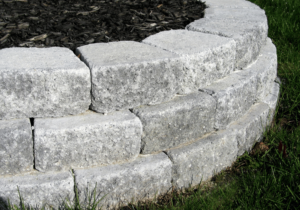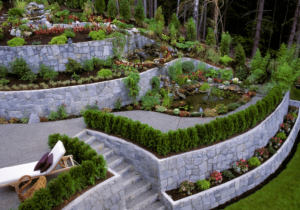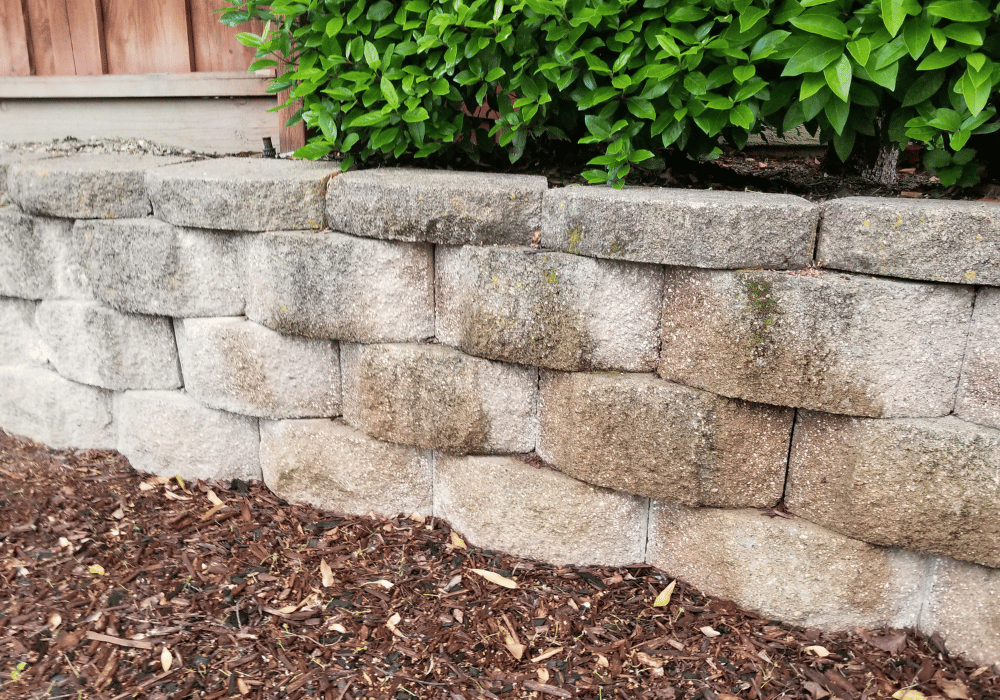In the world of landscape architecture, efficient space utilization is a cornerstone of effective design. With increasing property values and the desire for aesthetically pleasing outdoor spaces, homeowners and landscape architects alike are continuously seeking ways to maximize every square foot. One innovative solution that has gained popularity is the concept of multi-level retaining wall designs. These structures not only add dimension and interest to landscapes but also offer practical benefits such as enhanced stability and increased usable space.
Understanding Multi-Level Retaining Walls
Definition and Purpose
 A retaining wall is a structure designed to hold back or “retain” soil. These walls are typically used to create level areas in landscapes that have steep gradients. Multi-level retaining walls take this concept a step further by incorporating multiple tiers or levels, creating a staircase effect that can be both visually striking and highly functional.
A retaining wall is a structure designed to hold back or “retain” soil. These walls are typically used to create level areas in landscapes that have steep gradients. Multi-level retaining walls take this concept a step further by incorporating multiple tiers or levels, creating a staircase effect that can be both visually striking and highly functional.
Benefits Over Traditional Retaining Walls
- Space Maximization: By breaking up a slope into multiple levels, multi-level retaining walls allow for more usable flat areas, ideal for gardens, patios, or play areas.
- Enhanced Aesthetics: The tiered design adds depth and visual interest, making the landscape appear more dynamic and thoughtfully designed.
- Improved Stability: Multiple smaller walls can offer better structural integrity compared to one large wall, distributing the pressure exerted by the retained soil more evenly.
- Versatility in Design: These walls can be tailored to fit a range of styles and preferences, from modern minimalist to lush and green.
Key Design Considerations
- Site Analysis: Before beginning any project, a thorough analysis of the site is crucial to understand the soil type, slope gradient, and drainage requirements.
- Structural Engineering: Ensuring the integrity of the retaining wall involves proper engineering to account for factors such as load-bearing capacity and lateral earth pressure.
- Aesthetic Harmony: The design should complement the existing landscape and architectural style of the property.
Design Inspirations for Multi-Level Retaining Walls
Incorporating Greenery and Lighting for Enhanced Aesthetic Appeal
Integrating plant life into the design of multi-level retaining walls can soften the hard edges of the structure and blend it seamlessly with the environment. Consider using:
- Cascading Plants: Species like ivy or creeping thyme can drape over the edges of the walls, creating a lush, green curtain.
- Uplighting and Downlighting: Strategically placed lights can highlight the texture of the wall materials and the plants, adding drama and safety to the landscape.
The Technical Side: Building Multi-Level Retaining Walls
Materials and Construction Techniques
- Materials: Common materials include concrete blocks, natural stone, brick, and timber. Each has its own aesthetic and functional benefits.
- Construction Techniques: Proper foundation preparation is essential. This includes excavating to a suitable depth and ensuring a level base. Walls should be built with a slight backward slope (batter) to improve stability.
Importance of Drainage and Soil Retention
Effective drainage systems are critical to prevent water buildup behind the walls, which can lead to structural failure. French drains or weep holes can be incorporated to facilitate this. Additionally, using geotextiles and proper backfilling techniques can help with soil retention and prevent erosion.
Landscape Cost Considerations and Return on Investment
 While the initial investment for constructing multi-level retaining walls can be significant, the long-term benefits often outweigh the costs. Benefits include:
While the initial investment for constructing multi-level retaining walls can be significant, the long-term benefits often outweigh the costs. Benefits include:
- Increased Property Value: A well-designed landscape can significantly boost the market value of a property.
- Reduced Maintenance: Properly constructed retaining walls require minimal maintenance and can last for decades.
- Improved Usability: Transforming a sloped area into functional outdoor spaces can enhance the overall living experience.
Multi-level retaining walls offer a versatile and effective solution for maximizing space in challenging landscapes. They provide both practical benefits and aesthetic appeal, making them a valuable addition to any property. Whether you’re a homeowner looking to enhance your outdoor space or a landscape architect seeking innovative design ideas, multi-level retaining walls are worth considering.
